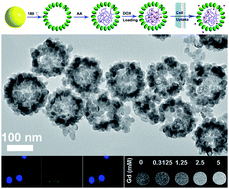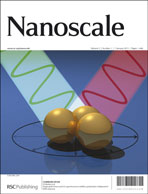In this study, multifunctional poly(acrylic acid) modified lanthanide-doped GdVO4 nanocomposites [PAA@GdVO4: Ln3+ (Ln = Yb/Er, Yb/Ho, Yb/Tm)] were constructed by filling PAA hydrogel into GdVO4 hollow spheres via photoinduced polymerization. The up-conversion (UC) emission colors (green, red and blue) can be tuned by changing the codopant compositions in the matrices. The composites have potential applications as bio-probes for cell imaging. Meanwhile, the hybrid spheres can act as T1 contrast agents for magnetic resonance imaging (MRI) owing to the existence of Gd3+ ions on the surface of composites. Due to the nature of PAA, DOX-loaded PAA@GdVO4:Yb3+/Er3+ system exhibits pH-dependent drug releasing kinetics. A lower pH offers a faster drug release rate. Such character makes the loaded DOX easily released at cancer cells. The cell uptake process of drug-loaded composites was observed by using confocal laser scanning microscopy (CLSM). The results indicate the potential application of the multifunctional composites as theragnostics (effective bimodal imaging probes and pH-responsive drug carriers).

You have access to this article
 Please wait while we load your content...
Something went wrong. Try again?
Please wait while we load your content...
Something went wrong. Try again?


 Please wait while we load your content...
Please wait while we load your content...